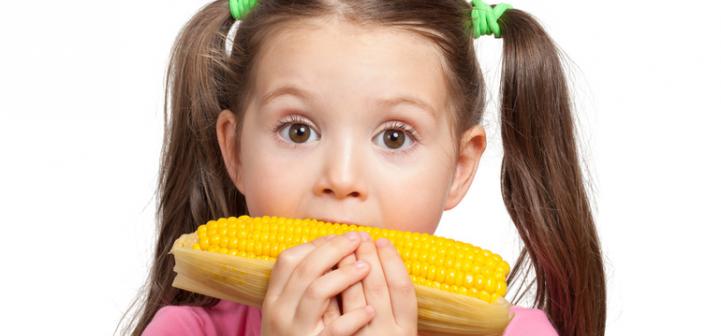
While evidence about the benefits of eating local food continues to build, farm-to-school endeavors present challenges when considering unique needs of school foodservice operations. Many districts encounter a variety of barriers to incorporating locally grown food in school cafeteria menus. However, advice about sourcing local foods for school meals programs continues to grow! Looking for a way to tackle these barriers in your school district? Partnership with an area food hub could be an option. In Rochester, New York, Headwater Food Hub provides fresh produce from 35 local farms directly to several area schools, including Wayne Central School District (CSD).
Wayne CSD’s Foodservice Director (FSD) Nique Wilson is no stranger to working with local foods. In 2012, with the help of Wayne County Cooperative Extension and Cornell University, Wilson partnered with Foodlink, a Feeding America regional food bank with the capacity to minimally process and distribute sliced apples. However, like many FSDs, Wilson embraced the farm-to-school ideology, but struggled with the logistics of incorporating local produce.
Wilson cited transportation, volume, price, and preparation as challenges to sourcing and utilizing local produce. For example, neither farmers nor schools were able to manage the transport of food from the farm to the cafeterias. Additionally, the volume of food needed to support a district’s school meals program was more than was feasible for a single small scale farm. Price points are higher for these local goods than from national food distributors. However, Headwater Food Hub has helped to bridge some of these gaps. After the success of the Foodlink partnership, Wilson contacted Phil Bianchi of Headwater, who brokered with farmers and brought food to the schools. After communicating her district’s needs, she can now request specific products from local farms through Headwater, and she is working with Bianchi to explore ways to process produce in order to decrease cost and increase availability.
Wilson has responded to some of these challenges using a bit of creative thinking. For example, cafeteria staff does not always have the time to process fresh, whole produce, so they have engaged students to do this work. In the case of shucking corn, students from elementary to high school enjoyed doing the work!
Wilson has been able to acquire whole apples, corn on the cob, Brussels sprouts, turnips, and cauliflower from local farms through Headwater, which were then offered as part of students’ lunch meals. To introduce the produce, she organizes a yearly Harvest Month program that allows students to see, touch, and taste fresh local vegetables and learn how and where they were grown. Does it work? Wilson initially ordered 60 heads of cauliflower for Harvest activities. Because of its popularity, staff incorporated the cauliflower into meals and doubled their order the next year!
Wilson thinks this partnership, and farm-to-school efforts overall, are important. She notes that volume and price are ongoing challenges, but she accepts increased price as a reasonable tradeoff for healthful food that supports sustainable food production and the local farming community. In fact, successes extend beyond initial expectations. These efforts have piqued interest and increased knowledge of staff and students, and Wilson also believes lines of communication have been opened among farmers, community members, students, school foodservice, and school education departments. This increased dialogue and community building have been invaluable.
Leveraging this success to further promote her programs was important. For example, photos of Harvest Month activities, like students shucking corn, were posted on the district’s Facebook page. A newsletter that included information about the new lunchroom initiatives was sent home with students. Wilson has also shared her story with Cornell Cooperative Extension agents, and with other area directors. She believes the predominately positive feedback makes the extra work worthwhile.
Exciting things are in store for Wayne CSD! In addition to continuing the Harvest Month program, Wilson would also to like invite local farmers to talk about their work to further stimulate interest and reinforce the connections that are being made. When asked for recommendations for other districts trying to implement similar programs, Wilson acknowledged that she was fortunate to have a supportive district and backyard availability. But the bottom line she says: just do it, and it gets easier. She also thinks it is helpful to acknowledge challenges early and focus on solutions.
Contributors
Alisha Gaines, PhD, Department of Nutritional Sciences, Cornell University
Katherine Baildon, Center for Behavioral Economics in Child Nutrition Programs, Cornell University
